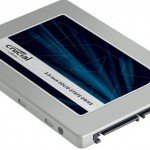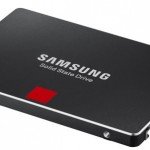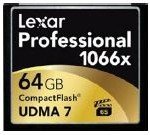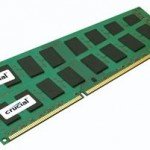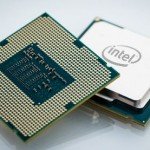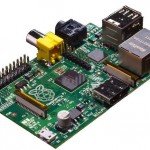UFS 2.0 : The New Generation of Mobile Device Storage
Flash memories are tremendously fast. According to our score list with SSDs, the flash memories in computers and notebooks can read and write at the rate of about 500 MByte per second if the right kind of interface is used. However, the situation is slightly different when it involves mobile devices: No flash memory can reach a speed of 500 MByte per second regardless if it is for writing or reading. In practice, speeds of about 50 MByte per second are the best these devices can produce, because these devices do not feature the SATA SSDs associated with PCs.
They use an embedded multimedia card (eMMC), which utilises a much slower storage interface. eMMCs are part of the built-in SOC systems (system on a chip), and are currently found in just about every popular smartphones and tablets. From a historical point of view, smartphone memories are descendants of the multimedia cards associated with digicams, which were earlier used as alternatives to compact flash. On average, a new version of eMMC appears every year. For example, in Google’s Nexus 7 tablet, the memory is interlinked using eMMC 4.1.
This means that speeds exceeding 104 MByte per second cannot be achieved. This benchmark is expected to be surpassed by the first-generation UFS (Universal Flash Storage), which was standardised in 2011 by the JEDEC (Joint Electron Device Engineering Council) as an alternative to eMMC. However, UFS 1.1 didn’t gain acceptance, since it hardly offered any advantages vis-à-vis eMMC – all this changed when UFS 2.0 came about in September 2013. This new storage method features transfer speeds of up to 1400 MByte per second, the new turbo memory may actually appear in the market this year.
UFS even manages to outpace SSDs
The energy consumption is an important factor associated with the relatively sluggish eMMC connections. When it comes to most mobile devices, conserving the battery’s life is more important than speed, and eMMC is very good at this. However, despite its better performance, the new UFS 2.0 is actually has power consumption that is on par with eMMC. Approximately 1 mW of power is consumed during operations and similarly both standards share the same power consumption levels, which is below 0.5 mW, when in the standby-condition. When UFS 2.0 is subjected to a full load, it actually consumes more power than eMMC. But, since it can finish its work relatively quicker, it can go back to the standby state faster. The second reason for the widespread use of eMMC has to do with costs. You may want to know SSD reliability issues.
This type of storage interface allows for an inexpensive mass production process. UFS 2.0 is significantly more expensive and should, at least in the beginning, fit in better with higher-end devices. However, UFS 2.0 produces transfer speeds that are more than three times higher than the transfer speeds associated with the current eMMC 5.0 standard. The increased speed can be attributed to clever design decisions. For example, data can be exchanged between the UFS host and the flash memory using the full-duplex procedure: Unlike eMMC, the memory access operations allow simultaneous reading and writing. Furthermore, additional control channels ensure that the data is delivered securely.
Unnecessary waiting periods (such as those that come about because a lengthy writing operation is imminent) are a thing of the past. The entire communication is passed on to the UFS host controller in the CPU chip via the UFS driver. This is where the next accelerator comes into play: The controller can sort the incoming commands in a manner that ensures that they can be processed as quickly as possible. UFS 2.0 then transmits several commands from a queue in parallel with the memory chip (command queuing).
With built-in memory-intelligence
Command queuing involves a prioritisation process: The speed at which a video player receives its data is higher than the speed at which the browser-download is saved in the background. The commands for the serial connections are not brand-new, but have been borrowed from the SCSI protocol, which is also used in USB 3.0. Consequently, UFS 2.0 makes it possible to address memory blocks in parallel as independent logical units (LUN – logical unit number).
This involves another speed-related advantage compared to eMMC. If an eMMC is used, the entire system has to wait for a operation to be completed before the next one can be initiated. UFS 2.0, on the other hand, is great at multi-tasking, thus lending optimal support to multi-threading. In addition to offering speed-related advantages, UFS 2.0 also supports more memory than an eMMC. Due to the hard-coded 32- bit addressing system in an eMMC, the system can only offer a flash memory of 2TB.
That’s more than enough for the latest smartphones and tablets. UFS is flexible when it comes to the addressing system, and can leapfrog the 2TB hurdle. The precise amount of memory that can be addressed depends on the UFS implementation. UFS allows the establishment of up to eight partitions, and can even boot up using said partitions. Furthermore, the partitions can be equipped with a protective function, so that they can preserve sensitive data like encryption keys.
The brand-new UFS 2.0 is available for Qualcomm’s upcoming Snapdragon 805 SOC, which is expected to dominate the market later this year and early next year. The Pantech Vega Iron 2 is the first smartphone to feature this SOC, and other devices will definitely follow its footsteps soon enough.
This is how UFS 2.0 saves and reads data
- Start data transfer In case of smartphones and tablets, the active apps initiate data transfers from and to the mobile memory on a near-constant basis. The apps’ connection is set up via the UFS host, which is part of the system CPU on the chip.
- Regulate commands The UFS driver directs the reading and writing commands to the host controller, which re-sorts them for optimal processing: It distributes the queries such that the flash cells in the memory chip are used in a uniform manner.
- Full-duplex The communication between the UFS host and the memory chip takes place in the full-duplex mode. This means that UFS 2.0 allows simultaneous reading and writing – an eMMC can only use the halfduplex mode.
- Multithreading The memory can process many different queries in parallel. For this, UFS 2.0 uses the SCSI commands, which make it possible to independently address individual sections of the Flash memory as a logical unit.
Features Comparison eMMC versus UFS
When it comes to the storage component, speed isn’t everything. Here’s a comparison between the most important features (such as the power consumption and the maximum addressable memory) of eMMCs and UFS.








